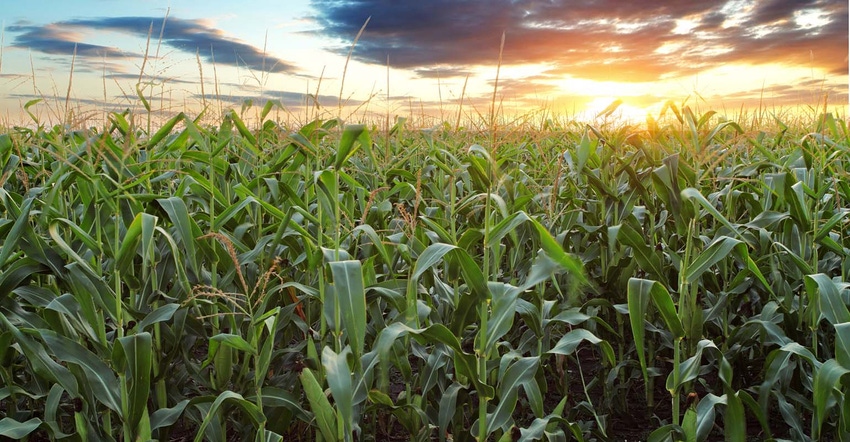
For a third straight week, analysts anticipated USDA would lower its corn and soybean crop quality ratings in its weekly Crop Progress report. The agency held firm in its ratings for two weeks, however, but finally dropped quality ratings lower for the week ending August 5.
“Crop ratings deteriorated even more than we anticipated this week after dry conditions hit parts of the Midwest and Plains,” notes Farm Futures senior grain market analyst Bryce Knorr.
USDA moved corn’s quality ratings from 72% rated good-to-excellent down to 71%, a move that trade analysts largely anticipated. Crop quality is still relatively better than a year ago, when 60% of the crop was rated good-to-excellent at this time.
On a state-by-state basis, Nebraska continues to prove itself as a garden spot for 2018, with 85% of the state’s crops rated in good-to-excellent condition. The corn crops in North Dakota (85%), Illinois (81%), Wisconsin (81%) and Minnesota (77%) also have substantially above-average crop quality.
Overall corn yield potential still fell significantly from the prior week, Knorr says.
“Potential corn yield based on the ratings fell 1.3 bushels per acre nationwide, with steady to lower conditions seen west of the Mississippi River,” he says. “Our models put yields at 178.7 bpa to 179.4 bpa, though that’s still better than we found in our survey of growers. Farmers surveyed expect yields of 175.4 bpa.”
Physiologically, the 2018 corn crop has continued to progress more quickly than average. Last week, 96% of the crop was silking, up from 92% a year ago and a five-year average of 92%. Another 57% of the crop is at dough stage, up from last year’s pace of 39% and a five-year average of 37%. And 12% of the crop is now dented, up from last year’s pace and the five-year average, both at 6%.
Soybean crop condition tilted more sharply lower, according to USDA, which assessed the crop at 67% rated good-to-excellent as of August 5. That’s three points lower than the agency’s assessment of 70% the prior week, with analysts only expecting that number to retreat to 69%.
Statewide, many states are still in relatively good shape, although areas such as Missouri (34%), Kansas (43%) and North Carolina (45%) continue to struggle.
“Soybean yield potential was steady to lower in states outside the Delta or not adjacent to Lake Michigan,” Knorr says. “Overall yields were one-half to a full bushel per acre lower depending on the model followed, pointing to yields between 50 bpa to 51.1 bpa. The low end of that range is in line with our survey, which puts the nationwide yield at 49.8 bpa.”
Soybean crop progress continues to outpace efforts from recent years. Last week, 92% of the crop was blooming, up from 89% in 2017 and a five-year average of 86%. And 75% of the crop is setting pods – significantly higher than 2017’s pace of 63% and a five-year average of 58%.
Spring wheat crop condition tumbled even farther, with USDA assessing 74% of the crop in good-to-excellent condition versus the prior week’s total of 78%. Harvest has now reached 13%, up from 4% the prior week and in line with the five-year average of 14%.
“Overall yield potential slipped around three quarters of a bushel per acre, with the projections ranging from 49.9 bpa to 51.4 bpa,” Knorr says. “But both those yields would be significantly above projections made by the recent tour in North Dakota.”
Winter wheat harvest inches toward completion, meantime, reaching 90%. That’s slightly behind 2017’s pace of 93% and a five-year average of 92%.
A separate survey of industry analyst by Bloomberg ahead of Friday’s USDA report puts the corn yield at 176 bpa on average, with soybeans at 49.8. All-wheat production is expected to be down around 25 million bushels from the government’s July estimate.
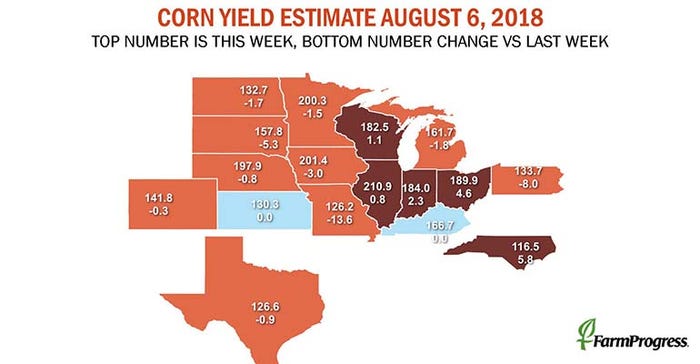
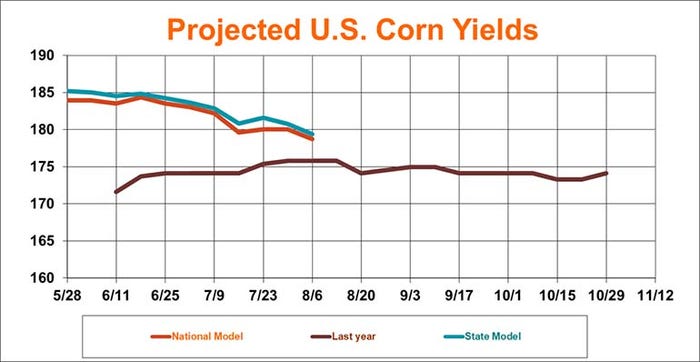
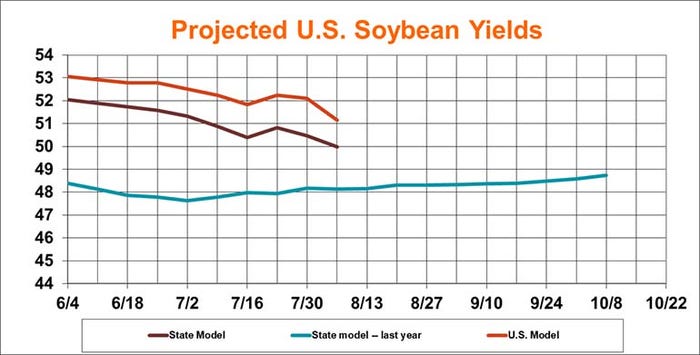
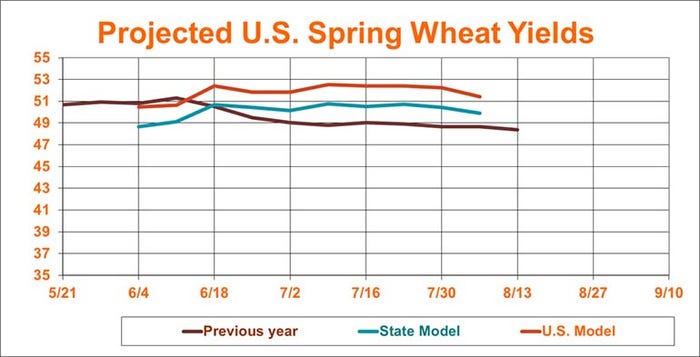
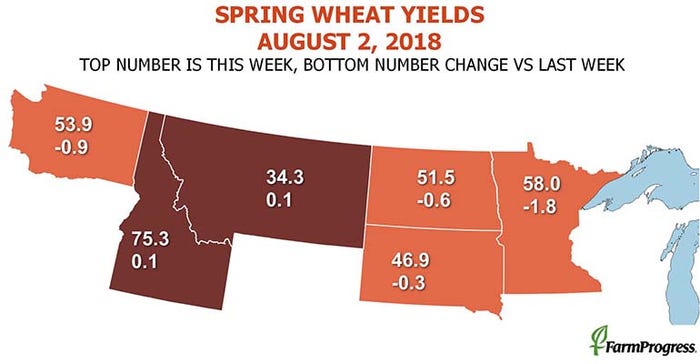
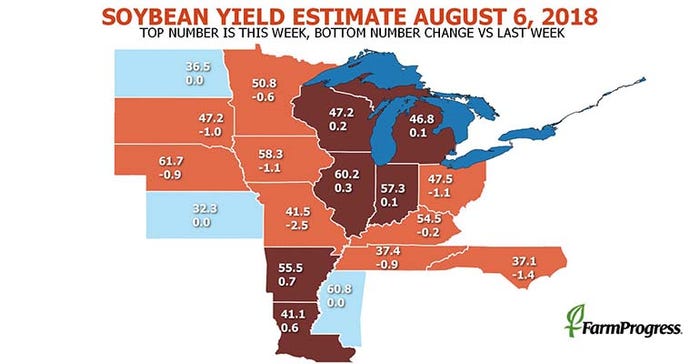
About the Author(s)
You May Also Like






